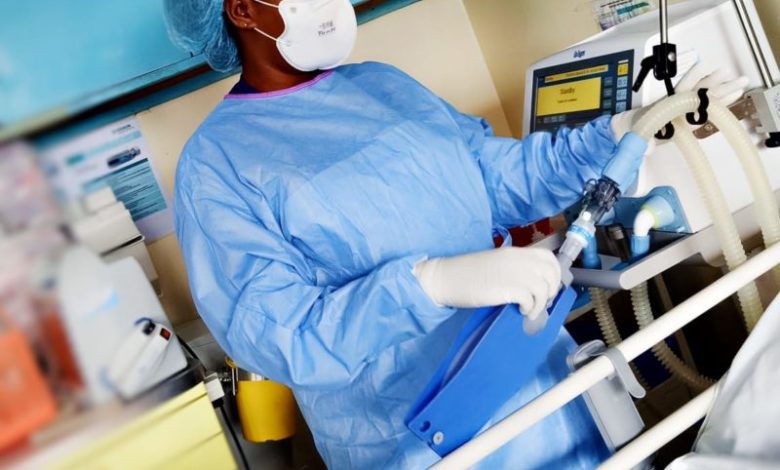Nurses and midwives Face Challenges Amid COVID-19 Crisis

There is need to appreciate the life-saving roles of nurses and midwives as front-line health workers. Together with other health providers they are trying to contain, and hopefully end the COVID-19 pandemic.
The World Health Organization (WHO) named 2020 as the International Year of Nurses and Midwives to push for increase in the global nursing workforce. This was decided before coronavirus outbreak.
Nurses and midwives are at the core of the primary health care system. According to WHO, nurses and midwives make up at least half of the global health workforce. Also, the world needs 9 million more nurses and midwives if it is to achieve Universal Health Coverage (UHC) by 2030.
Data from the WHO survey responses from 39 countries in Africa, indicates that there is a slight increase in the number of nurses and midwives from 1.02 per 1000 people in 2005 to 1.06 in 2018. The WHO notes that this is still far below the number needed to achieve UHC.
According to the WHO,UHC aims to ensure that all people can use the promotive, preventive, curative, rehabilitative and palliative health services they need while not exposing the user to financial hardship.
In the COVID-19 response, nurses are working non-stop to provide quality care, serve in intensive care units, and also ensure routine services continue to be delivered to the patients.
Nurses face challenges
Awuor Opee, is a pediatric critical care nurse at the Kenyatta National Hospital. She says, her experience since the declaration of COVID-19 as a pandemic has been a challenging one, mixed with anxiety and uncertainty.
“This being a new virus, it has brought in a lot of uncertainty and anxiety that borders fear,” she said. Opee notes that as a front-line health worker, she has experienced both physical and mental exhaustion because of longer shifts.
“We doubt whether we will make it through this crisis due to our crippled healthcare system,” she adds.
Esther Wanjiku, a nurse at Swop Kawangware, says she has experienced discrimination. Wanjiku took herself to isolation for 14 days at Mbagathi hospital on suspicion that she had coronavirus.
“My experience was dehumanizing especially when my colleagues treated me as the virus and not the person they work with,” she said. Wanjiku also said that her specimen sample for testing got lost and she had to repeat the sample collection process. “There is an urgent need to streamline the process at the quality control department in hospitals. This will reduce such incidences of repeated sample collection,” she said.
Lack of motivation from government
She also recommends mental health services for those in isolation and post isolation. “Fatigue and burnout for healthcare providers at the forefront are getting worse day by day as thorough patient screening is now key to an already understaffed lot,” she adds.
Both Opee and Wanjiku don’t feel motivated by the government to risk their lives in attending to COVID-19 patients. “We are going through extreme emotional and psychological pressure regarding this infection. There is also constant worry whether we will carry the virus home to our families,” says Opee.
The experience of Opee and Wanjiku mirror those of other colleagues who are demoralized, because they feel unappreciated.
The International Year of the Nurse and the Midwife in 2020 seeks to improve the working conditions of nurses and midwives. “These are the people who devote their lives to caring for mothers and children; giving lifesaving immunizations and health advice; looking after older people and generally meeting everyday essential health needs,” said Dr. Tedros Ghebreyesus, Director-General WHO, during the World Health Day in April.
Measures taken by government
According to Kenya’s ministry of health, the government has ramped up measures to curb the rise of COVID-19 cases. These measures include the footing of quarantine bills, 7pm-5am curfew, the use of face masks in public places and the lock down on two virus hot spots, Eastleigh in Nairobi and Old Town in Mombasa City.
Although the government through the ministry of health had promised it will provide Personal Protective Equipment (PPEs) to protect health workers, there is a big shortage in government facilities and most clinicians are forced to re-use them sometimes.
The president’s Covid-19 medical emergency allowance and benefits for frontline healthcare workers was recently approved by Salaries and Remuneration Commission (SRC).However, more than a month later, some listed beneficiaries are yet to receive the promised benefits, while other front line health providers are missing in the list.
The emergency allowance is estimated to cost Ksh 3.3billion for a period of three months with effect from 1st April, 2020.
Even as COVID-19 continues to cause havoc among countries, the International Year of the Nurse and the Midwife calls for the need to invest more on nurse-led services. This will enable nurses and midwives to practice to their full potential.
What journalists should do:
- Find out whether public health facilities in Kenya have enough nurses as required by the WHO.
- Find out the capacity of public health facilities to adequately carry out tests for COVID-19.
- Find out what challenges nurses face and other health professionals during this pandemic.
- Share some positive stories of what motivates front-line health providers.
- Find out whether the ministry of health has provided adequate PPEs and other required health equipment.
- Talk to county leaders to find out how prepared they are to deal with the pandemic. Compare their budget, allocated amount of money and what is already spent. Do the numbers match?
- Share success stories of counties that are doing well when it comes to fighting the coronavirus.
just right post